Of the many “firsts” associated with the 1893 World’s Columbian Exposition, the issuing of the first commemorative postage stamps by the United States Post Office became philatelic history. The set of sixteen stamps are among the most sought-after by collectors of stamps and Columbiana.
In the winter of 1892, Postmaster-General John Wanamaker reported on the Columbian series:
The introduction of the Columbian series of postage stamps will contribute in a marked way to the great recognition given by the Government of the United States to the Columbian Exposition, and they will create for it, both in this country and abroad, an interest that will help it financially and in many other ways. In addition the ‘mania,’ as it is called, for collecting postage stamps, as specimens, is universal throughout the world. It affects every class and condition of people, and is not confined to age or sex. It is shared, perhaps, by millions of people, from the school boy and girl to the monarch and the millionaire, and the value of stamps in private collections which will never be drawn upon to pay postage may safely be placed at many mill ions of dollars. The beauty and unique character of the new Columbian stamps will cause their sale in large quantities simply for use in collections, and not only will they be purchased in single or partial sets by collectors, but in view of the limited time in which they will be issued they will be accumulated in great quantities by dealers and others to meet future demands.
The introduction of the new stamps, though not designed primarily for that object, will prove to be a revenue measure of the highest importance to the public service. The net profits to be derived from their issue, that is, the extra amount beyond the ordinary revenue that would have resulted from the sale and use only of ordinary stamps, may be fairly placed at $2,500,000.
Fifteen of the Columbian stamps were released for sale at the start of the new year in 1893, and the Post Office Department mounted a prominent display of the commemorative stamps later that year in an exhibit inside the United States Government Building on the fairgrounds of the World’s Fair.
The new commemorative stamps involved a notable increase in size. Postmaster-General Wanamaker explained in his report that the scenes of the Columbus voyage being depicted on the stamps would be “engraved reproductions of pictures or other works of art somewhat crowded with figures.” To do justice, it was deemed necessary to adopt a larger size stamp, being the same height but “very nearly double the length” of the current stamps.
Not everyone was happy about the larger stamps, as you can see in the article reprinted below from the January 21, 1893, issue of The Critic.
The Lounger
If the Columbian postage-stamp had come to stay, I should get one of the new patent stamp-moisteners that have been born with it. There is no excuse for so big a stamp. What we needed was not larger but smaller ones than we had been using. It was not necessary to portray on an envelope the landing of Columbus: his portrait, which would have taken only half the room, would have answered the purpose quite as well. I, for one, protest against these blanket sheets. They are all very well if you want to paper a wall with them, but for the purposes of postage, one much smaller would carry a letter just as far. Then again, I object to the glue on their backs; it is too sickeningly sweet. I don’t see why a competent chef should not be employed to prepare postage-stamp glue; it would certainly be much less obnoxious if it were more savory. When we are forced to put a thing into our mouths it should at least have a pleasant taste.
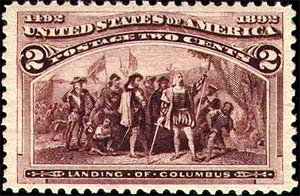
The two-cent Columbian stamp. [Image from Wikipedia]
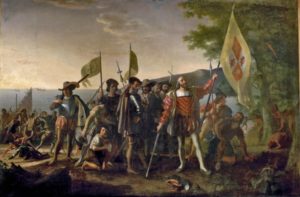
The “Landing of Columbus” image decorating the two-cent stamp was designed by engravers Alfred Jones, Charles Skinner, and Douglas Ronaldson, based on the painting Landing of Columbus by John Vanderlyn on display in the Rotunda of the Capitol Building in Washington D.C.
SOURCES
“The 1893 Columbian Exposition Issue” Siegel Auction Galleries November 6, 2013.
Rosende, Roberto M. “The Columbian Series of 1893” Philatelic Foundation Bulletin Vol. 10, No. 1, 1992.

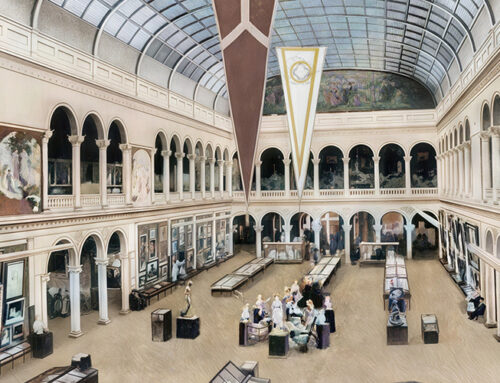
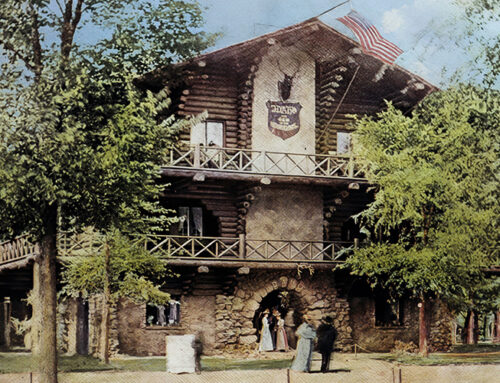
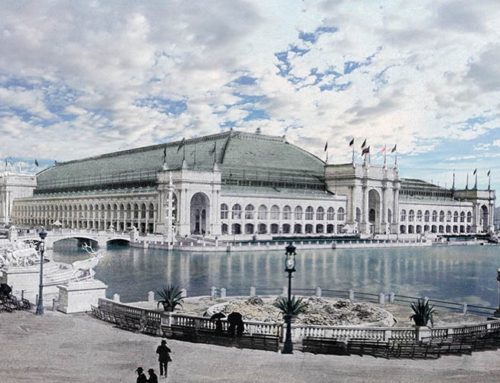
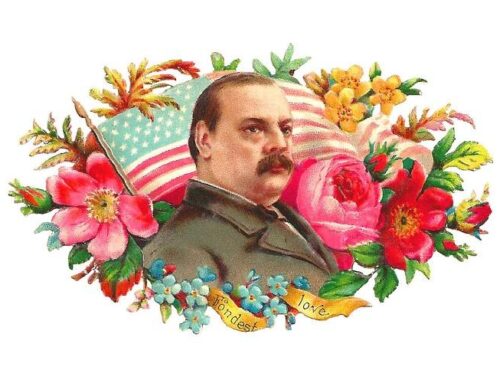

I have just discovered An embroidered handkerchief from the 1893 Chicago Worlds Fair as I was going through old boxes of family memorabilia. With this be something you would be interested in offering up for auction?
Hi,
We don’t offer auctions, but you could check out https://www.worldsfairauction.com/ or eBay. I hope your handkerchief finds a good home!